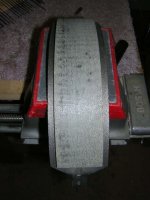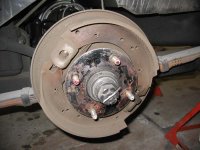Moseso
Jedi Knight
Offline
It has long been accepted that the 10" Girling rear brakes, fitted to TR3s until sometime in 1959, lock up too soon -- well before the front discs are doing what they could be.
People have suggested swapping out the 10"ers for the later 9" parts, but that's an expensive pain in the rear.
Needing to have my shoes relined, it occurred to me that the new linings didn't HAVE to be the full 2-1/4" width of the shoes. So, I asked my reliner to put 1-3/4" linings on 'em. He said he could do that.
The car is still not back together from it's winter of tweakage, and it will be while before I've got those rear shoes bedded-in, but a report on brake balance/efficiency will be forthcoming...
People have suggested swapping out the 10"ers for the later 9" parts, but that's an expensive pain in the rear.
Needing to have my shoes relined, it occurred to me that the new linings didn't HAVE to be the full 2-1/4" width of the shoes. So, I asked my reliner to put 1-3/4" linings on 'em. He said he could do that.
The car is still not back together from it's winter of tweakage, and it will be while before I've got those rear shoes bedded-in, but a report on brake balance/efficiency will be forthcoming...

 Hi Guest!
Hi Guest!

 smilie in place of the real @
smilie in place of the real @
 Pretty Please - add it to our Events forum(s) and add to the calendar! >>
Pretty Please - add it to our Events forum(s) and add to the calendar! >> 

